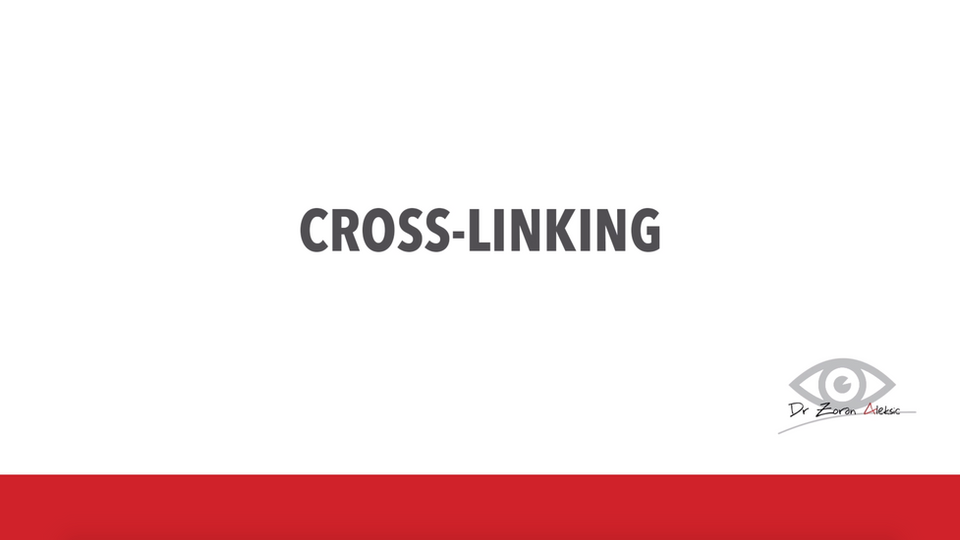Holiday Closure Notice: The Eye Surgery and Dr Zoran Aleksic will be closed from Fri 12 Dec 2025 (15:00) to Tue 6 Jan 2026 (08:30). For emergencies, please see on-call roster by clicking here.
What is Keratoconus?
Keratoconus is a progressive eye condition in which the cornea becomes thin and bulges outward into a cone shape. This irregular shape distorts how light focuses on the retina, causing blurry and fluctuating vision, glare, halos around lights, and increased light sensitivity—often starting in the teenage years or early adulthood.
About the cornea: The cornea is the clear, front window of the eye. It transmits (focuses) light to the interior of the eye, allowing us to see clearly. Corneal injury, disease, or hereditary conditions can cause clouding, distortion, and scarring, which reduce visual quality. In keratoconus, the cornea’s structure weakens and thins, leading to a cone-like protrusion and visual distortion.
Common symptoms
-
Blurry or fluctuating vision (often worse at night)
-
Increased light sensitivity, glare, and halos
-
Frequent changes in glasses/contact lens prescriptions
-
Eye rubbing and eye strain
Causes & risk factors
-
Genetic predisposition / family history
-
Atopy and eye rubbing
-
Certain connective-tissue or systemic conditions
How We Diagnose Keratoconus
At our Cape Town practice, we use specialised corneal diagnostics to detect, confirm, and monitor keratoconus progression:
-
Corneal topography/tomography to map shape and curvature
-
Pachymetry to measure corneal thickness
-
Keratometry & refraction to quantify vision changes
-
Ocular surface evaluation for dryness/inflammation that can worsen symptoms
Early diagnosis is crucial—keratoconus often progresses, and timely treatment helps preserve vision.
What is Corneal Cross-Linking (CXL)?
Corneal cross-linking is a minimally invasive procedure designed to strengthen and stabilise the cornea, aiming to halt or slow the progression of keratoconus.
How CXL works
-
Riboflavin (vitamin B2) drops are applied to the cornea.
-
The cornea is illuminated with UV-A light for a carefully timed period.
-
This creates new collagen cross-links, reinforcing corneal biomechanics.
Who is a candidate?
-
Confirmed or progressive keratoconus
-
Adequate corneal thickness for safe treatment
-
Clear cornea (minimal scarring) for optimal outcomes
Your candidacy is determined after a detailed assessment and imaging.
Benefits
-
Stabilises the cornea to reduce/stop further bulging
-
Helps preserve current vision and contact lens tolerance
-
May allow safer planning of future vision correction options
Risks & considerations (uncommon but possible)
-
Temporary discomfort, light sensitivity, or hazy vision during healing
-
Delayed epithelial healing or infection
-
Rare scarring or corneal haze
We will review your personalised risk–benefit profile before proceeding.
What to Expect: The CXL Journey
Before treatment:
-
Comprehensive corneal imaging and consultation
-
Contact lens “holiday” (if needed) before measurements
-
Review of medications and ocular surface health
During the procedure (typically 45-60 minutes):
-
Numbing eye drops; you remain awake and comfortable
-
Application of riboflavin drops and controlled UV-A exposure
Recovery & aftercare:
-
Bandage contact lens for comfort (usually a few days)
-
Antibiotic/anti-inflammatory eye drops as prescribed
-
Vision may be blurrier for several weeks before stabilising
-
Follow-up visits with repeat topography to track stability
Keratoconus Management Beyond CXL
While CXL aims to stop progression, some patients also benefit from:
-
Glasses or soft/toric lenses for mild irregularity
-
RGP, hybrid, or scleral lenses for sharper vision in advanced irregularity*
-
Corneal transplant for severe scarring or thinning (less commonly required)
*If you’re exploring contact lenses, we’ll guide you to appropriate options; note that some specialty lens types may not be offered in-house.
Why Choose Dr Zoran Aleksic in Cape Town?
-
Focused expertise in diagnosing and managing keratoconus
-
We offer in-house corneal imaging to detect subtle progression early
-
Individualised treatment plans with transparent counselling and follow-up
-
Conveniently located in Cape Town, South Africa
Ready to protect your vision? Book a keratoconus assessment with Dr Zoran Aleksic. We’ll confirm your diagnosis, discuss candidacy for CXL, and map out your personalised care plan.
FAQs
Is CXL a cure for keratoconus?
No—CXL is designed to stabilise the cornea and slow/stop progression. It doesn’t “reverse” keratoconus, but it helps preserve vision over time.
Will my vision improve after CXL?
Some patients notice modest improvements as the cornea settles, but the primary goal is stability. Visual correction (glasses/contacts) may still be needed.
How long does recovery take?
Surface healing takes a few days. Vision can fluctuate for several weeks; most patients return to normal activities within 3–7 days, depending on comfort and job demands.
Is CXL covered by medical aid?
Coverage varies by plan. We’ll provide the necessary clinical notes and codes so you can confirm benefits with your medical aid.
Can both eyes be treated?
Often each eye is treated on separate days based on disease activity and safety.
Practice Details
-
Location: Cape Town, South Africa
-
Services: Keratoconus diagnosis, monitoring, and corneal cross-linking (CXL)
-
Equipment: Corneal topography/tomography, pachymetry, and advanced imaging for longitudinal monitoring
Book your CXL consultation with Dr Zoran Aleksic | Request a keratoconus screening | Send us your previous topography for review


